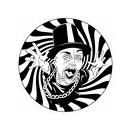Aqui unos truquillos de Mauricio Balma que ha publicado en el grupo de usuarios de la Xl-7 en Yahoo, está en ingles, si alguien quiere traducirlo, bienvenido será...
I have placed on the web several tips-tricks to program the command station.
However, in my case, language is an obstacle to fully share some of my thoughts or findings over this great synthesizers line.
I repost some of them, that I just found on the web, these ones are old but still working. :
http://www.icrawl.org/407663612-tips-fo ... icio-balma
TIPS FOR PROGRAMMING CORDS ON THE EMU COMMAND STATION:
One of the most interesting features on the EMU romplers on the patch edit section, is the cords function. Cords function allows you to link certain patch parameters, to create interesting combinations, and control those linkswith the programmable knobs. I present the most simple ideas trying to be creative with the patch cord programming, these are just a few of several routes I tried to explore...others are a headache to write here for a non english speakerThe cords work with the SOURCE/DESTINATION concept. On the EMU romplers, If I want to control the volume of the sound with the key sensivity, I have to link the VELOCITY parameter (source) with the AMP VOLUME (destination) , so, the cord could look like this:
VEL+/- ----> AMP VOL + 96. Creating a wide of phat effect using 4 layers with the same instrument:On the patch programming section, you can specify the start point of the patch, from a range of 0~127.You can assign the sample start point to a knob.But the interesting point is to assign a different start point for each one of the layers, using the same instrument on the 4 layers...
Assign a lead sound to the layer 1, and with the copy layer function, copy it to the locations layer2, layer3 and layer4.Then, go to the cords screen, and create this cord:
Layer 1MIDI A -----> Start Point + 5Layer 2MIDI A -----> Start Point + 10Layer 3MIDI A -----> Start Point +15Layer 4MIDI A -----> Start Point +20
Try moving the Knob A, and listen carefully the effect that produces when the four layers loop and start at different times each one.
A similar effect can be produced, using the knob B to control the fine pitch:
Layer 1MIDI B -----> Fine tune +1layer 2MIDI B -----> Fine tune -1Layer 3MIDI B -----> Fine tune +2Layer 4MIDI B -----> Fine tune -2 Now, activate the chorus function , assigning the same parameter to each one of the layers, program the third cord with these parameters:
Layer 1MIDI C ------> chrsamount +20Layer 2MIDI C ------> chrsamount +40Layer 3MIDI C ------> chrsamount +60Layer 4MIDI C ------> chrsamount +80
A weird sample loop effect with the GAIN4X parameter,GAIN4X can be source or destination. It's at both sides. GAIN4X amplifies, if you can program it correctly.
CORD 4: (For all the layers)GAIN4x -----> Sloop +127CORD 5: (for all the layers)QUantize ----> GAIN4X +0
CORD 6 (fo all the layers)MIDI D -----> CORD5Amount + 127
With these three cords, you will link the gain4x to the sloop. But this will only be activated, when you link something to it from the source and put GAIN4X again but as a destination . You leave this cord in 0, and then, you have to assign a MIDI controller to this 2nd cord, in order to control the amount of both cord programmations. Creating a soft RANDOM effect for alive sounds. On this cord, we'll play with the LFOS, and link it to the ampvolume of the instruments. You can use parameters a little bit different for each one of the layers to create a more unpredictable effect.
this is useful for pads:Program on each one of the layers, on the LFO screen, a LFO1: RANDOM effect. Running free
Then, go to the CORDS section:CORD 1:
LFO1 +/- ----> Lag0IN +100CORD 2LAG0 ----> QUantize +50CORD 3Quantize ----> AMPVOL +25
If you want to control the random effect instead assign a frozen parameter on the CORD 3, you can put the CORD 3 on 0, and then, using fourth CORD to assign a MIDI KNOB to control the CORD 3 on a specified range.There are several ways to create this effect, and using a different one for each layer, will enhance the variety of the patch.CORD 1WHITE(or pink) ----> Quantize + 127CORD 2Quantize ----> AmpVelo + 0
CORD 3MIDI F ----> CORD2Amount + 127
Instead AMPVelo, you can use the filterfrequency.
b) TIPS FOR ENHANCING THE INTERACTION BETWEEN A PATCH AND ITS ASSIGNED USER ARPEGGIO:The EMU arpeggiator, doesn't allow to record the arpeggio notes on its sequencer (command stations and proteus 2500). This is something rigid, an inconvenience when you want to change some notes on the arpeggio, and get bored of hearing the same sequence of notes time after time.But with this method, you can change certain notes of an arpeggio just moving the knobs. Let's create a USER ARPEGGIO, on the user location 01, with these parameters.. . this is just a simple example, but you can make it longer, with the 32 available positions for each arp:
USER ARPEGGIO 01, velo: velocity
trans: transponse or coarse
dur: duration or lenght of the note.Note 1 velo 55 trans 0, dur 1/16
Note 2 velo 75 trans +5, dur 1/8
Note 3 velo 95 trans +2, dur 1/16
Note 4 velo 105 trans 0, dur 1/16
Note 5 velo 70 trans+12, dur 1/8
Note 6 velo 110 trans 0 dur 1/8
Note 7 velo 50 trans +2 dur 1/16
Note 8 velo 85 trans +5 dur 1/8
1. Go to the patch edition screen. use an "arp template" sound, that one that has default values. Using the COPY LAYER function on the Save menu, copy the layer1, to the locations 2, 3 and 4.2. Go to the velocity zone programmation screen. Input these values:Layer 1 velo range 01~60
Layer 2 velo range 61~80
Layer 3 velo range 81~100
Layer 4 velo range 101~1273. Go to the CORD programmation screen. Input these values:
CORD1
layer 2, 3 and 4 desactivated
Layer 1:
Knob A ----> Pitch +5
CORD2
layer 1, 3 and 4 desactivated
Layer 2:
Knob B ----> Pitch -5CORD3
layer1, 2 and 4 desactivated
Layer 3:
Knob C ----> pitch +2CORD4
layer1, 2 and 3 desactivated
Layer 4:
Knob D ----> pitch +7
4. Go to the ARP programmation screen, and assign to this patch, the USER ARP that we programmed before.Move the knob A. You will notice that only the notes 1 and 7 are affected by the knob movement, changing its transponse on +5Move the knob B. You will notice that only the notes 2 and 5 are affected by the knob movement, changing its transponse on -5Move the knob C. You will notice that only the notes 3 and 8 are affected by the knob movement, changing its transponse on +2Move the knob D. You will notice that only the notes 4 and 6 are affected by the knob movement, changing its transponse on +7
You can program even more complex changes, activating all the layers on each cord, and assign them a different pitch change for each one of the layers, on just a single knob movement. Also, instead modifying the pitch, you could program a specific filter freq for a single note, with a knob movement, ar the attact time, to create a reverse effect on certain notes inside the arpeggio, panning changes, or fading and bringing in and out some specific notes. Use your brain with this,....
c) A TIP FOR CREATING DINAMIC PATTERNS ON COMMAND STATIONSThe sequencer of the command station is simple beatiful. the most intuitive I ever use, despide its low resolution (364). Is one of the greatest tools for music composition on hardware devices, specially for dance scene controlling other devices with MIDI.There is a way to create dinamic patterns, using the Multitrack function. As you know, most of the sequencers, have a separation between the track number, and the MIDI channel number.By default, the sequencer track number, coincides with the MIDI track number. but you can send by MIDI, for example, the track 1A, throught the MIDI channel 5 or 6 or whatever... or play the sound of the track 3 with the notes recorded on the track 1, but this makes no sense if you don't need it.Taking advantage of the MULTITRACK function, you can create patterns, that suddenly can change the parameters of all its tracks, all at the same time, just pressing a track button. Let's use the track
#1 , as the multitrack channel.Record on the track
#2 , a kick patch, to guide the beat.Record on the track
#3 , a hi/hatRecord on the track
#4 , a clap or a snare sound.Record on the track
#5 , a bassRecord on the track
#6 , a synth leadRecord on the track
#7 , a pad Record on the track
#8 , a sfx patch.
This is the complex part: on track 1 go to the MIDI assignment screen, where you can designate if the MIDI is internal, external, both or none. Assign the MIDI channel of this track
#1 , as the track
#2 . Now you'll have the sound of the track 2, the kick patch, on the track
#1 . Record some change on it. A slow reduction of the filter, reducing the brightness of the kick. Or mute it at the last measure of the pattern, to create a bridge. SAVE ITNow, Assign the MIDI channel of this track 1 as the track
#3 . Now you'll have the sound of the track 3, the hi/hat, on the track
#1 Record some change on it. A reduction of the gate time, or increase its volume, or an aleatory panning. SAVE IT.Now, assign the MIDI channel of this track 1 as the track
#4 . You already have on that track, information that will affect tracks 2 and 3, you'll keep overwriting it, but that information will remain there. Record some change to the clap or snare sound, on the track 1. An addition of more snare notes at the end of the pattern, or a variation on the frequency. SAVE IT
NOw, assig the MIDI channel of this track 1, as the track
#5 , the bass track. A change on the transponse with the crappy touchpad of the command station will be cool. SAVE IT.
You have the idea....? Keep doing this if you want to, with all the tracks. Record on the track 1 as many changes as you want, for all the rest of the tracks.
Now, the important part: with the modwheel, change the MIDI track assignment of this track 1A, as "MULTI A channel". You have to move the modwheel completely to the left until the MultiA word appears....
SAVE the pattern with this track 1A MUTED!!!!
Now play the pattern, with all the tracks activated, except track 1. And then, activate the track 1. All the tracks will change according to your programmations on the track 1.
The kick will decrease its filter or be muted at the end of the pattern, the hi/hat will become shorter, the bass will change its pitch, etc. etc...great for bridges, great for controlling several tracks simultaneously, great for changing preset parameters, without having to create a new patch and saving it, consument patch memory. Great for enhancing your realtime performing.
hope to be helpful. This is valious information, if you love your command station.... d)GIVING A HUMAN FEELING TO YOUR COMMAND STATION PATTERNS
Sometimes, patterns created throught step-by-rec method, results in non-human, boring or repetitive sequences.
Recording music with exact perfect timing gives an unnatural feeling to the music, because 100% accuracy isn't normal.
When a human foot hits a kick drum, it's leading the tempo of the song, but it has diminute, small innacuracies on the timing. I'm unable to repeat that kick at the exact moment each time when pressing the pedal with my foot.
There will be differences of milliseconds, sometimes earlier, sometimes later than the exact 4/4.
Also, there is a variation on the strenght of each kick, sometimes, I press a little bit harder, others, softer than expected.
These little variations can be almost imperceptible on a good drummer. But the brain can perceive this little differents when listened on a consecutive and acumulative way.
And that's the reason why we get bored of listening the same exact loop during several repetitions, because the brain recognizes that the pattern is always the same, with no variations, so, there is no more information to process, only the same picture again and again. We lose interest on the melody.
There are certain process that we can execute in order to give a natural feeling to our music, specifically, the compositions with the EMU command station.
When we record a bassline, with any process diferent than realtime rercording with the Quantizer OFF, the notes will be aligned to strict tempo locations after finalizing the recording.
This is the result of a recording on realtime, but quantizing the results. Recording on step by rec or GRID will result even in more strict and rigid parameters.
This example, is a recording of 16 notes on 1 mesuer, using a resolution of 1/16, according to the EMU Command Station sequencer:
Location
01-01-000 velo 120 gate time 70
01-01-096 velo 100 gate time 70
01-01-192 velo 110 gate time 75
01-01-288 velo 100 gate time 75
01-02-000 velo 120 gate time 95
01-02-096 velo 120 gate time 95
01-02-192 velo 120 gate time 95
01-02-288 velo 100 gate time 99
01-03-000 velo 112 gate time 70
01-03-096 velo 127 gate time 99
01-03-192 velo 120 gate time 99
01-03-288 velo 127 gate time 99
01-04-000 velo 100 gate time 96
01-04-096 velo 112 gate time 96
01-04-192 velo 112 gate time 70
01-04-288 velo 127 gate time 99
The programmation of the patch also plays an important role on the patterns' overall sound. So, be sure to include in all your patches, random variations or sensitivity to the key pressure.
These cords will help a lot in our goal: give a nature and human feeling to our patterns:
CORD 1
AmpEnvelope +/- ----> Ampvol +100
CORD 2
Velo +/- -----> Ampvol +75
CORD 3
Keyrandom1 -----> Fine tune -3
CORD 4
Keyrandom2 ----->Ampvol +3
CORD 5
Velo + ------> Fine tune +8
On CORDS 3 & 4, the value is small because we don't want to cause an excesive effect of aleatory values, just a little bit.
On the natural kicks, for example, if you press harder the pedal, the pitch of the kick sound will rise a little bit, so we try to emulate this, linking the key velocity with a increase on the fine tune. The harder you press the pad, the higher the fine pitch. That's what we tried on the CORD 5.
Now, let's change the 16 notes table example.
Remember:
The range of velocity is 1~127
The resolution is 384 per kick
We have 16 notes. Why repeat exactly the same value on each note?
why repeat a value twice, when we have more than 16 velo options to choose?
Let's apply this concept, let's create patterns inside patterns. On the first note, never start at 01-01-000. Give a break to the sequencer, some milliseconds at the beggining of the loop.
Let's use 16 different values, on the gate, the velo and the start time. Don't repeat the same value twice inside one measure. don't understimate micro variations on values. Your brain will perceive them, and will find pleasure on them.
1) Modifying the start time
01-01-003 velo 120 gate time 70 +3
01-01-095 velo 100 gate time 70 -1
01-01-198 velo 110 gate time 75 +2
01-01-292 velo 100 gate time 75 +4
01-01-381 velo 120 gate time 95 -2
01-02-096 velo 120 gate time 95 =
01-02-189 velo 120 gate time 95 -3
01-02-293 velo 100 gate time 99 +5
01-03-383 velo 112 gate time 70 -1
01-03-092 velo 127 gate time 99 -4
01-03-198 velo 120 gate time 99 +6
01-03-283 velo 127 gate time 99 -5
01-04-007 velo 100 gate time 96 +7
01-04-104 velo 112 gate time 96 +8
01-04-201 velo 112 gate time 70 +9
01-04-282 velo 127 gate time 99 -6
So, now realize that all the start times are different. This is not absolutely necessary, a couple of values could coincide, that will be natural too???? (repetition, is also a form of change....Brian Eno).
We are moving in a range of -6 minimum, and +9 maximun. If we go to far away on unnacuraccy timing, you could lose the tempo. Modifying the velo>
01-01-003 velo 118 gate time 70
01-01-095 velo 98 gate time 70
01-01-198 velo 108 gate time 75
01-01-292 velo 100 gate time 75
01-01-381 velo 110 gate time 95
01-02-096 velo 120 gate time 95
01-02-189 velo 95 gate time 95
01-02-293 velo 105 gate time 99
01-03-383 velo 115 gate time 70
01-03-092 velo 102 gate time 99
01-03-198 velo 112 gate time 99
01-03-283 velo 122 gate time 99
01-04-007 velo 101 gate time 96
01-04-104 velo 111 gate time 96
01-04-201 velo 91 gate time 70
01-04-282 velo 121 gate time 99
Now, on the velo time, we applied a similar concept. But not the exact concept. You'll notice that I didn't repeated a single value, but I kept a pattern: there are groups of three, that end with the same value. The first group, 118,98 and 108, ends with 8, and goes on a range of 20. The same with the 2nd group of three notes, 100,110 and 120.
Use your imagination. Find order inside the chaos. Find patterns between a group of values that seem to have no relation between them. (for a good reference about the world of patterns on the nature and mathemathics, watch "PI, faith in chaos")
For example, on a group of numbers, that seems to be aleatory, you can hide a code of order. Use, for example, the FIBONNACCI numbers, or PRIME numbers, inside a group of random values, of, for example, velocity range numbers.
some Fibonnacci numbers:
1,2,3,5,8,13,21,34,55,89,
On a sequence of 16 notes, on the notes, 1,2,5,,8 and 13, use a velocity on a range between 80 and 90. Just an example....
Could you find a pattern on a sequence of notes like this one???? Maybe you won't find it in a concious way, but be sure, you're subconcious will appreciate it.
some Prime numbers:
1,2,3,5,7,11,13,17,23,29
Apply prime numbers, on the start time, from backwards, to forwards, using only the 1,2,3,5,7,11,13 and 23 prime numbers....
There are infinite ways, to create hidden ordered patterns inside values that seem have no sense of order.
In this way, going deep inside the mathematic world of music, you can create very complex harmonies, that will sound fresh each time you play them, because your brain will discover something new, from time to time....
I hope to be helpful with this information. It took me a long time to write it down. I didn't copy this information from any source, everything comes from the imagination.
Maurricio Balma
Costa Rica







